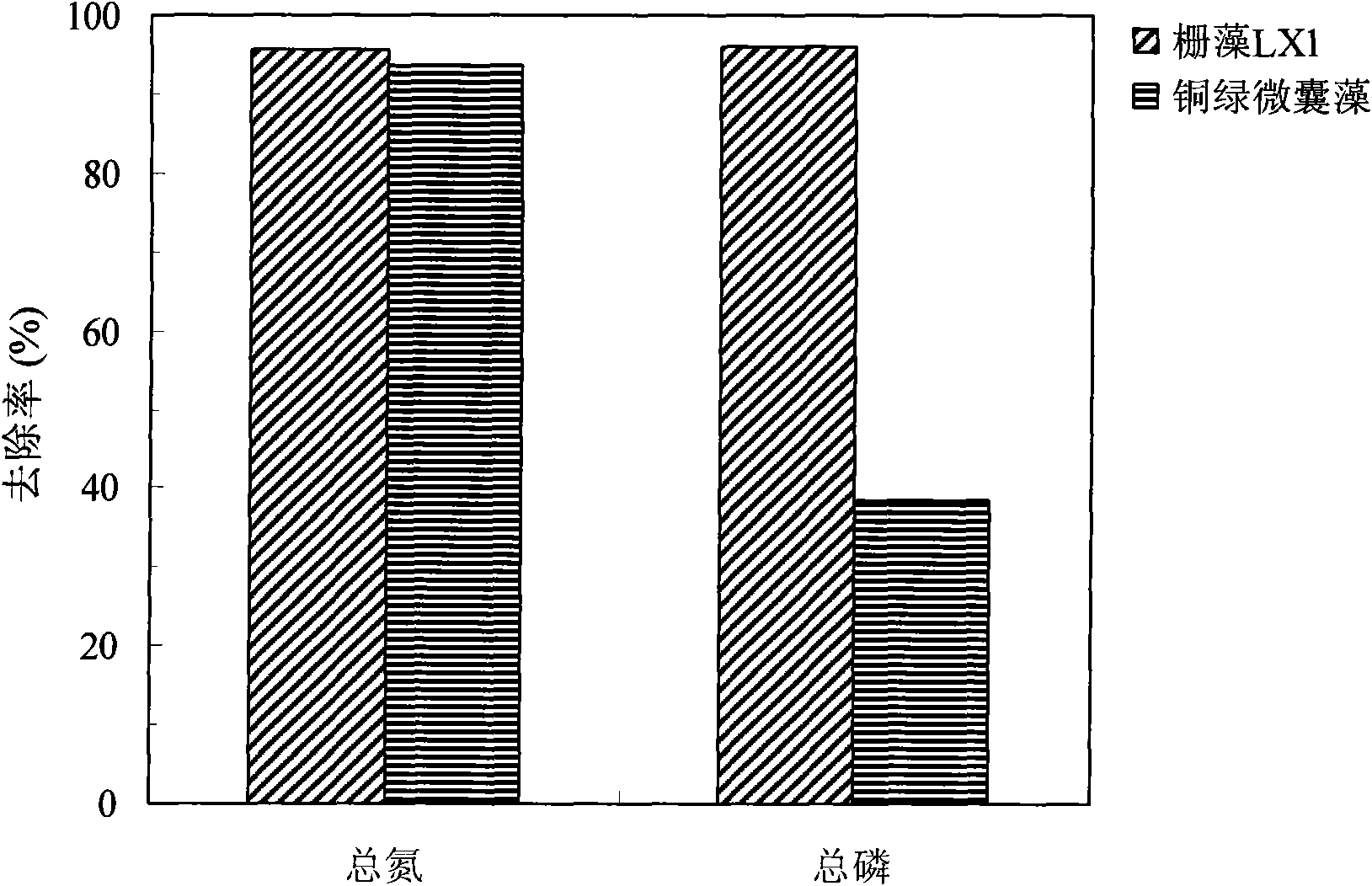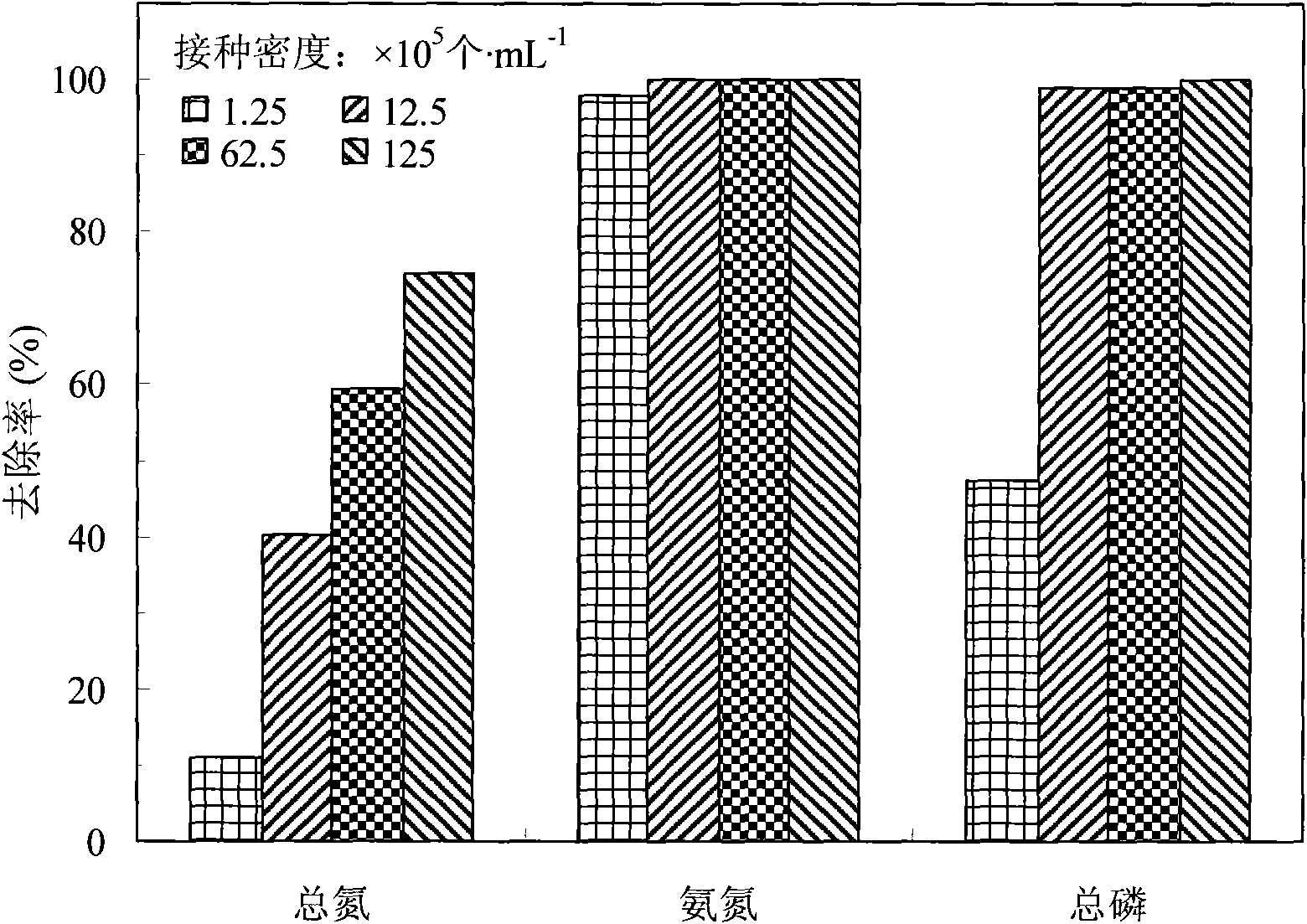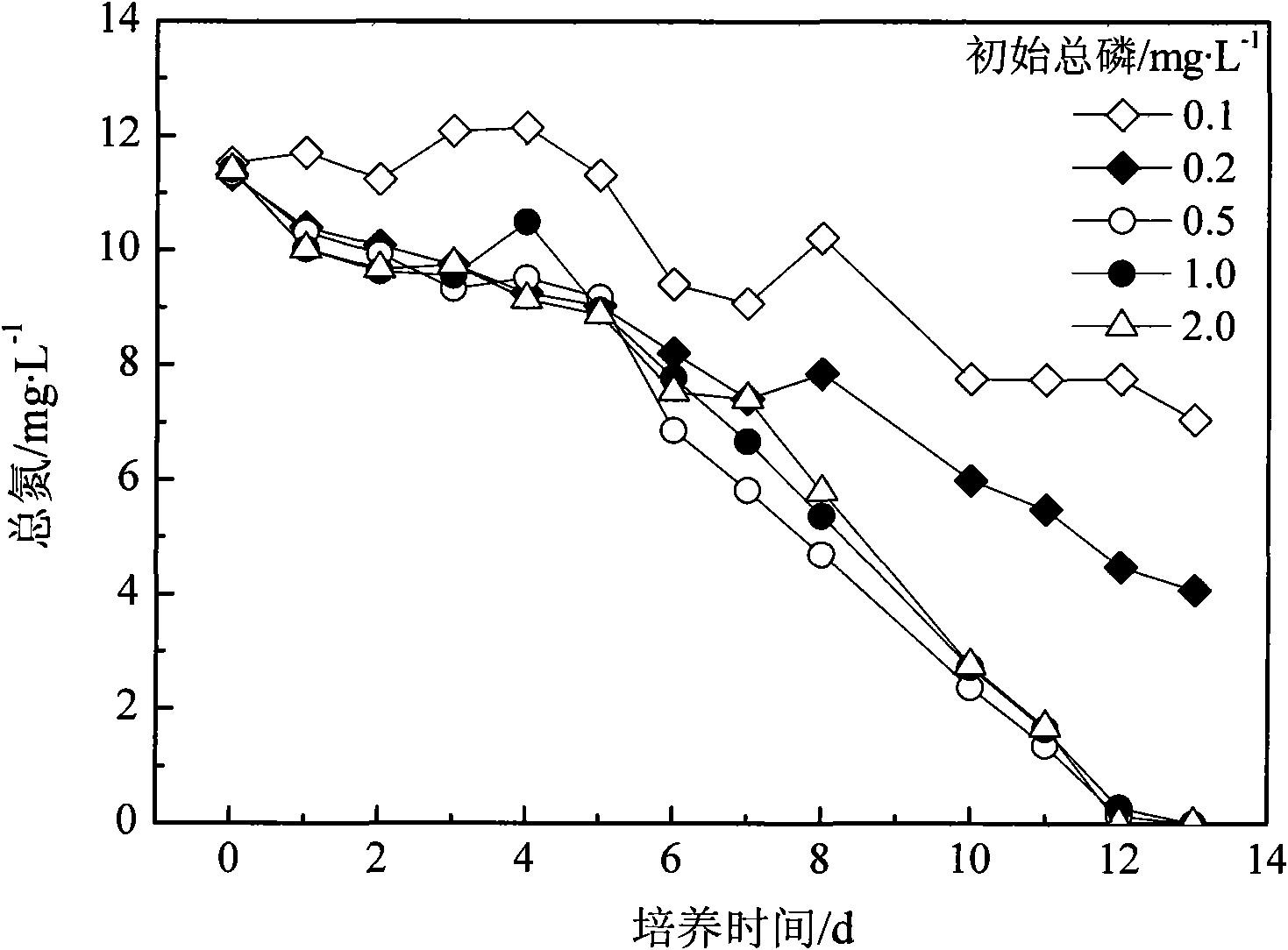Low-nutrition scenedesmus and application thereof in sewage deep treatment
A technology for advanced treatment of Scenedesmus, applied in biological water/sewage treatment, water/sludge/sewage treatment, single-cell algae, etc. Dealing with other issues to achieve the effect of reducing the risk of algal blooms
- Summary
- Abstract
- Description
- Claims
- Application Information
AI Technical Summary
Problems solved by technology
Method used
Image
Examples
Embodiment 1
[0017] Secondary effluent to urban sewage (total nitrogen TN is 26.6mg·L -1 , Total phosphorus TP is 3.9mg·L -1 ) Is inoculated with Scenedesmus species, the initial inoculation density is 1.5×10 5 A·mL -1 ,Under the conditions of light-dark ratio 14h:10h, temperature 25℃, relative humidity 75%, light intensity 800~1300lux, at the same time algae cells photosynthesize to absorb nitrogen and phosphorus nutrients. After 13 days of culture, high-speed centrifuge (10000rpm ×10min, 4°C) Centrifuge the Scenedesmus algae liquid, harvest Scenedesmus, and obtain the municipal sewage tertiary effluent with very low nitrogen and phosphorus concentration.
[0018] The removal rates of this strain of Scenedesmus on nitrogen and phosphorus in the secondary effluent of municipal sewage were 95.8% and 96.1%, respectively. The removal rate of Microcystis aeruginosa (Microcystis aeruginosa source: freshwater algae seed bank) under the same culture conditions was 95.8% and 96.1%. Respectively 93.6% ...
Embodiment 2
[0020] The initial inoculation density of Scenedesmus is 1.25×10 5 A·mL -1 , 1.25×10 6 A·mL -1 , 6.25×10 6 A·mL -1 And 1.25×10 7 A·mL -1 , In the artificially simulated secondary effluent of urban sewage (total nitrogen TN is 15.0mg·L -1 , Total phosphorus TP is 2.0mg·L -1 ) After culturing for 3 days, the removal rates of TN were 11.0%, 40.1%, 59.3% and 74.7%; 3 -N removal rates are 98%, >99%, >99% and >99%; the removal rates of TP are 47.5%, 98.9%, 98.9% and >99% ( figure 2 ). It can be seen that increasing the initial inoculation density can significantly enhance the water purification effect of this strain of Scenedesmus on urban sewage.
Embodiment 3
[0022] In the artificially simulated secondary effluent of urban sewage, the fixed initial total nitrogen TN is 11mg·L -1 , Control the initial total phosphorus TP to be 0.1, 0.2, 0.5, 1.0 and 2.0 mg·L respectively -1 . Inoculate Scenedesmus according to the method in Example 1, the inoculation density is 2.4×10 5 A·mL -1 . The removal of nitrogen and phosphorus in the secondary effluent of five artificial simulated urban sewage by Scenedesmus is shown in Figure 3(a) and Figure 3(b). After 13 days of cultivation, the removal rate of TP in the secondary effluent of five artificially simulated urban sewage basically reached 100% by Scenedesmus, indicating that the removal of TP by Scenedesmus was not greatly affected by the N / P ratio (relative content of nitrogen and phosphorus). The initial TP is 0.1, 0.2, 0.5, 1.0 and 2.0 mg·L, respectively -1 Under the conditions, the removal rate of TN by Scenedesmus vulgaris was 38.8%, 64.0%, >99%, >99% and >99%, respectively. It can be seen th...
PUM
 Login to View More
Login to View More Abstract
Description
Claims
Application Information
 Login to View More
Login to View More - R&D
- Intellectual Property
- Life Sciences
- Materials
- Tech Scout
- Unparalleled Data Quality
- Higher Quality Content
- 60% Fewer Hallucinations
Browse by: Latest US Patents, China's latest patents, Technical Efficacy Thesaurus, Application Domain, Technology Topic, Popular Technical Reports.
© 2025 PatSnap. All rights reserved.Legal|Privacy policy|Modern Slavery Act Transparency Statement|Sitemap|About US| Contact US: help@patsnap.com



